Pengok Locomotive
Works
Located in Internationally-known tourist city of Yogyakarta, Pengok locomotive works is the place where all of the diesel locomotives in Java island (and occasionally from Southern Sumatra) are repaired and maintained. In fact, this is the place where all of those locomotives undergone major overhaul.
Beside of maintenance, Pengok locomotive works is the place where all of the disused diesel locomotives are stored. Some of them met their fate in here, either scrapped or vandalized until they virtually disappear
The workshop itself used to have an interesting beginnng. It started its life as the locomotive works owned by NIS (the first railroad company in Indonesia, a privately owned-Dutch Indies company). And it was used solely for 1435mm locomotives. But when the 1067mm railway lines of Staat Spoorwegen (SS, a Dutch Indies government company) entered the NIS domain in 1884, the railway lines in Pengok workshop was later modified to allow the 1067mm rolling stock to enter the premises, therefore making the lines in the workshop as dual gauge.
When the Japanese Imperial Army arrived in Indonesia (and Yogyakarta) they pulled up all of the 1435mm lines in Indonesia, and using the workshop to modify the 1435mm locomotives into narrow gauge locomotives. Those locomotives were destined for Malaysia, but for some reason they never made their way to there.
But there were also some 1435mm locomotives which had never been modified, and stored in the workshop. These locomotives survived the wars in 1940s and remained at there, before being scrapped in 1970s.
When the dieselization came to Indonesia in 1950s, the workshop was selected as a suitable place for diesel maintenance. And the workshop had acted as a diesel maintenance workshop eversince.
The workshop is also the place where the locomotive engineers learned new technologies. Including computerized locomotives since 2003.
Nowaday, the business goes on as usual in the workshop. But the workshop remains as the place where the past, present, and the future of Indonesian locomotives met together.
These photos were taken in 27th December 2004, when the Author, along with other railfans visited the place.
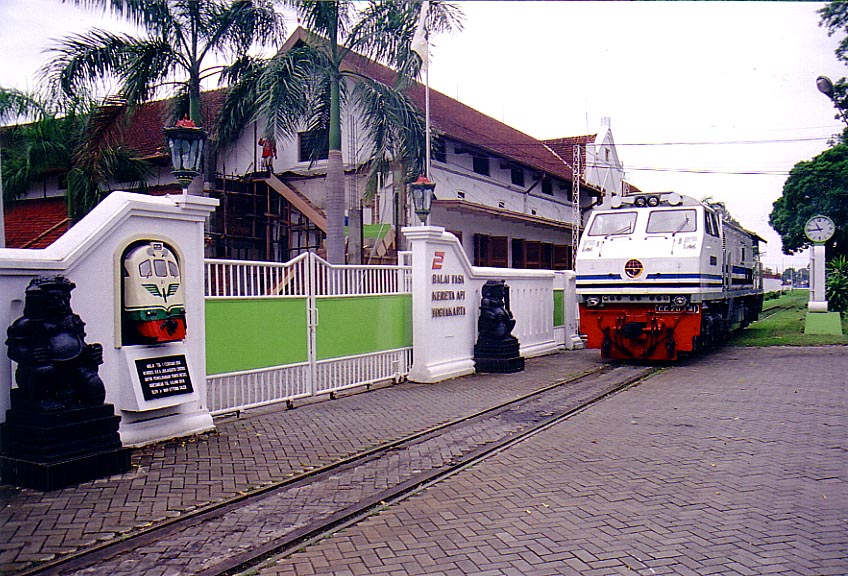 |
Welcome to the Pengok Workshop! Anyone who first came to here, will be greeted by this very railway atmosphere, where there is a level crossing right in front of the workshop's gate. This line is used to test the locomotive's condition before and after being maintained. Originally this line is used to be the Dutch Indies State Railway (SS/Staat Spoorwegen) mainline, before being converted into a test track in 1940s. Note the CC20341, which is normally used for Jakarta-Bandung route, but spent its time in Yogya for maintenance. |
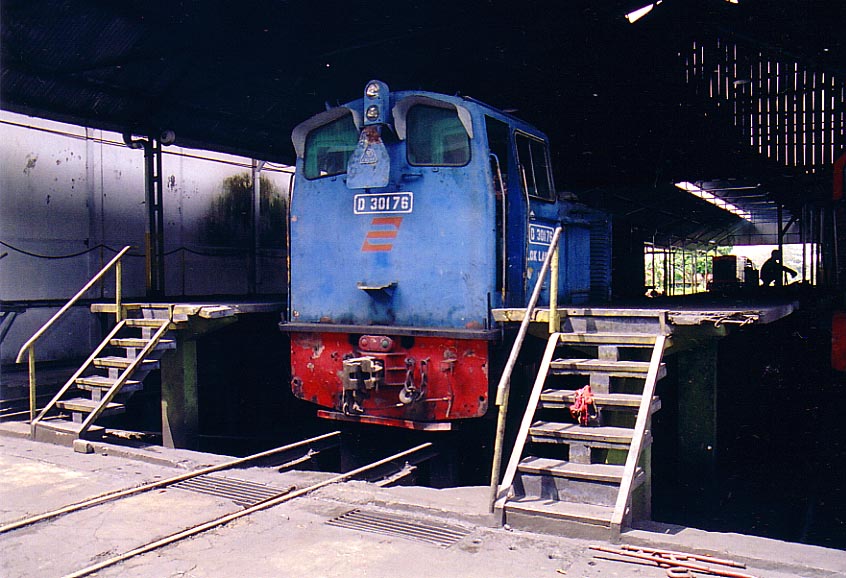 |
This D301 is used for shunting duty around the workshop, and it is the only locomotive in Indonesia which is painted in blue. |
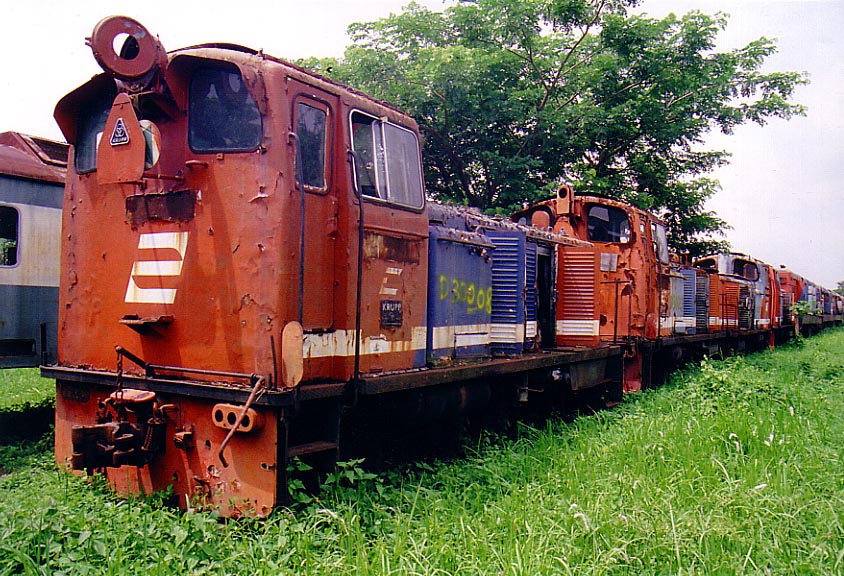 |
These D300 locomotives was once used as a shunter in Bandung station. But their obsolescent technology rendered them impractical, and they were later stored in late 1990s. |
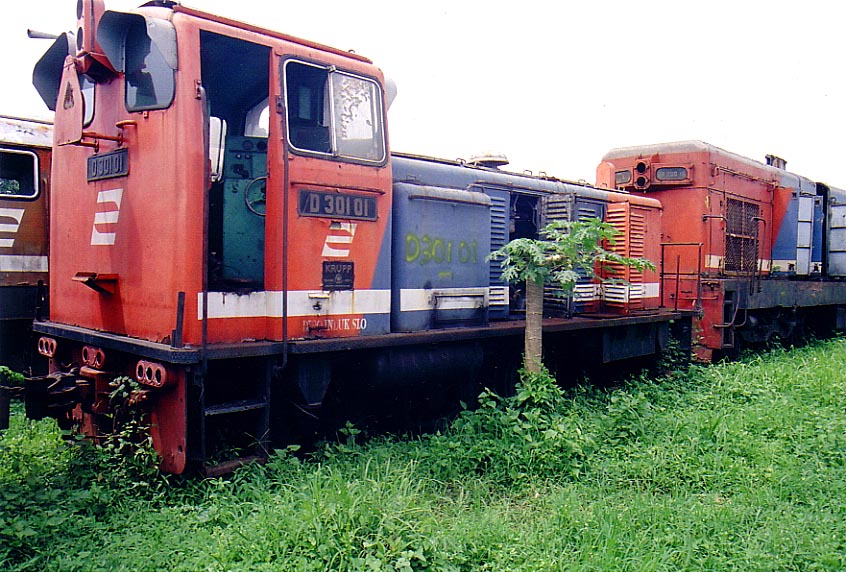 |
D301 class leader, D30101, is seen stored at Pengok locomotive works. This loco is the first of the rather ubiquitous D301 shunter locomotives. Its last base was in Solo, where it was used for shunting or branchline works to Wonogiri. |
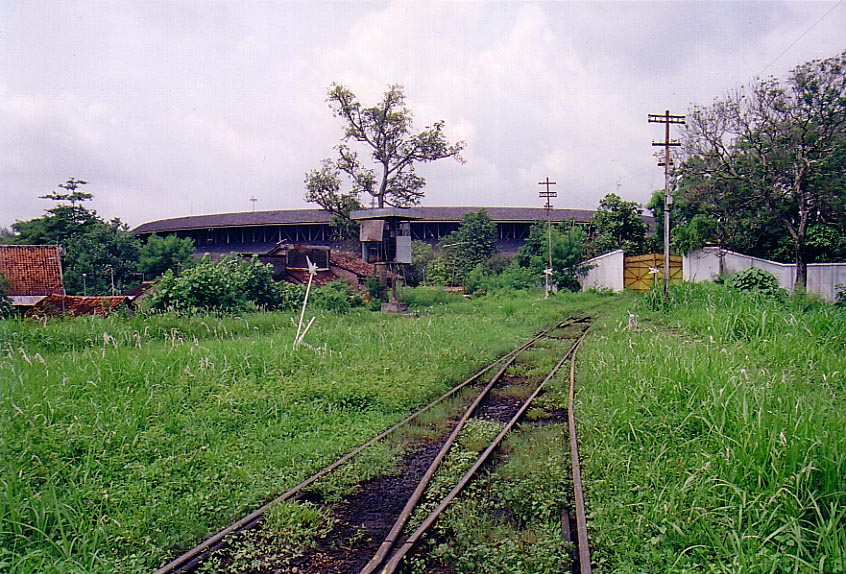 |
From the locomotive yard, we can see the glimpse of the massive 'Omah Bunder' roundhouse which is located to the West of the workshop. The words 'Omah Bunder' is translated in English as 'Round House'. The roundhouse was originally a standard gauge roundhouse. Later it was converted into a dual gauge ones. The roundhouse was used for steam locomotives stabling, up until 1984 when Indonesian State Railway dispersed their fleet of steam locomotives, and it is now used for locomotive's spare parts storage. |
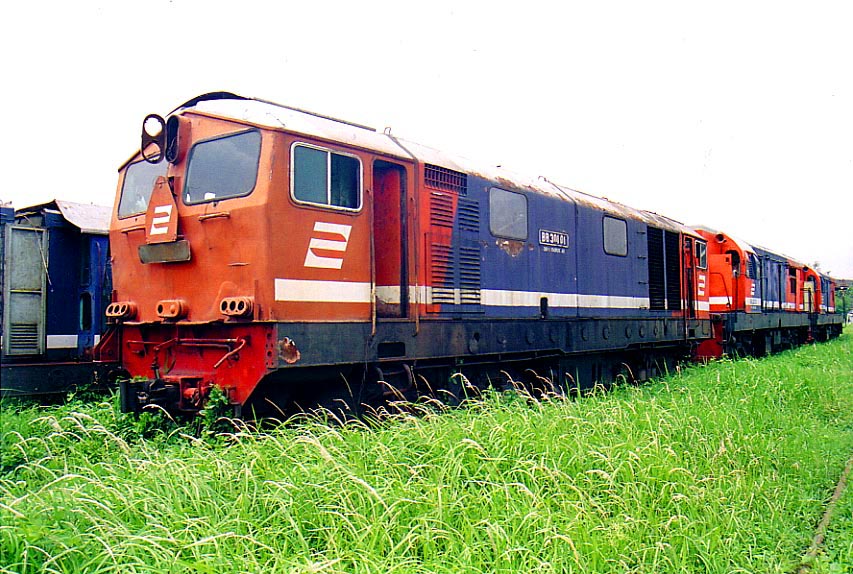 |
This BB301 class leader, BB30101 had a lots of history behind it. When it was first introduced in 1964, it was the first pure express diesel locomotive in Indonesia, and it was able to travel at speed 110 km/h in regular service. It was frequently used for 'Bima' overnight express train, which between 1960s to 1980s was the best passenger train in Indonesia. It even appeared on Bima train's advertisement as well! But, when its popularity declined, it was later used for lesser trains, and spent its last active years in Jember before being stored. |
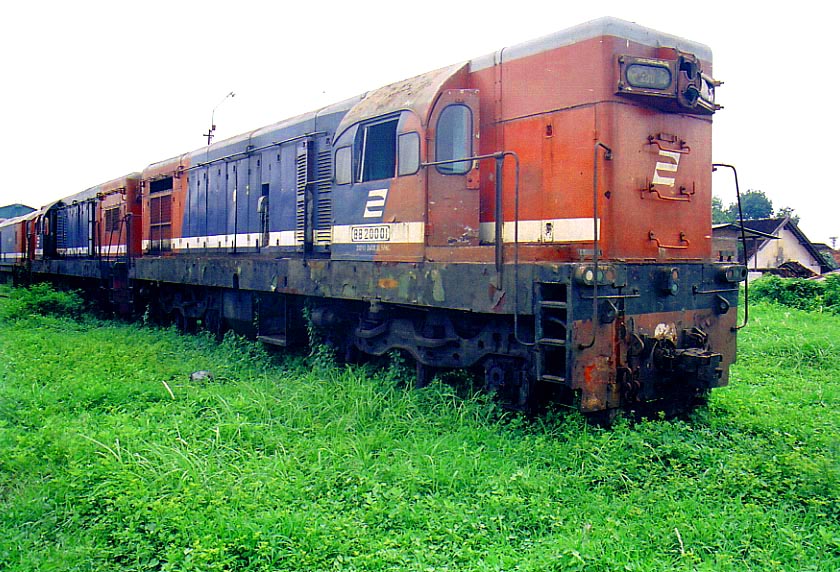 |
BB20001 is a very special locomotive. Because this loco is the first General Motor locomotive in Indonesia. It is also the first ever two-stroke engined locomotive in Indonesia. It was originally used for freight hauling duty, or express passenger service on lightly laid mainline track on the Javanese north coast between 1950s to 1980s. It was last based in Semarang Poncol depo, where it spent most of its active years at there. |
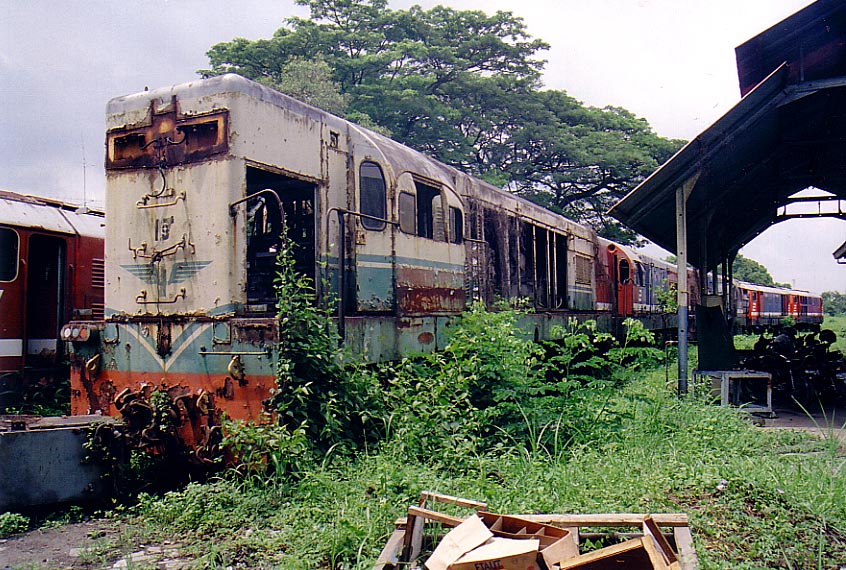 |
Some of the stored locomotives in Pengok had been taken out from duty since 1980s or before, like this derelict BB200. And unlike the average stored locomotives in Pengok, this loco is still painted in cream-and-green livery, which was used by Indonesian State Railway up until 1994. |
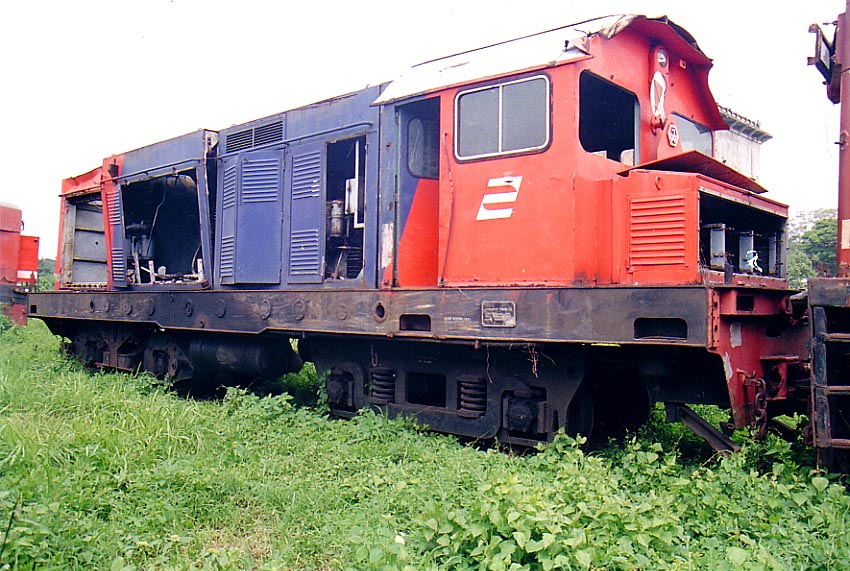 |
This locomotive is a rare species in Indonesia, because this BB305 locomotive is the example (out of 3) of the only Austrian-built locomotives in Indonesia. And during its active years, it was owned by Leces Paper Mill (not state railway) and it spent most of its living years around Probolinggo, Jember and Surabaya where it was used for paper hauling trains, or occasionally passenger trains. |
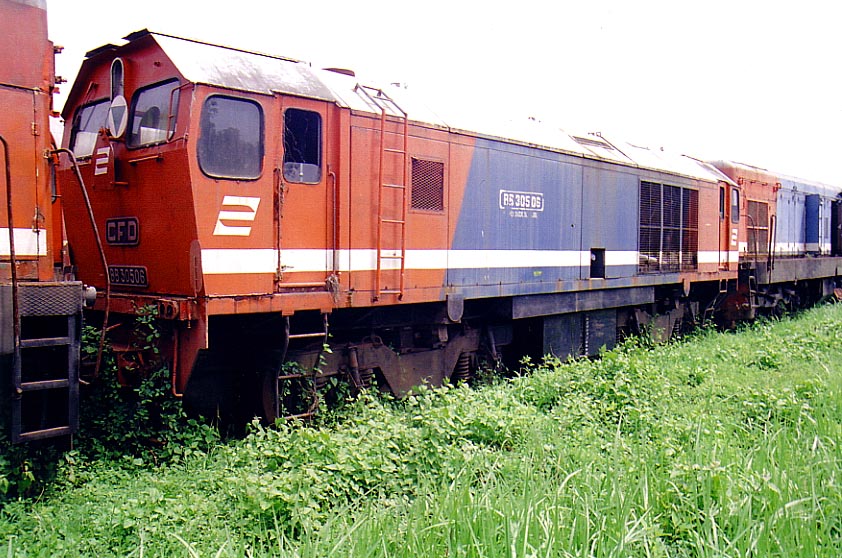 |
Another variant of BB305 is this BB30506 where, despite of its code similarity, this loco is a completely different loco. BB30506 was built by CFD in France, therefore making this loco as the only French locomotive type in Indonesia. Three were built, only one remain in active duty. The similarities between this loco, and the one on the above picture, is that these locos have the same engine, transmission, and equipments; they were operated by the same company; they were also used on the same route; and both of them ended up in Pengok workshop's storage! |
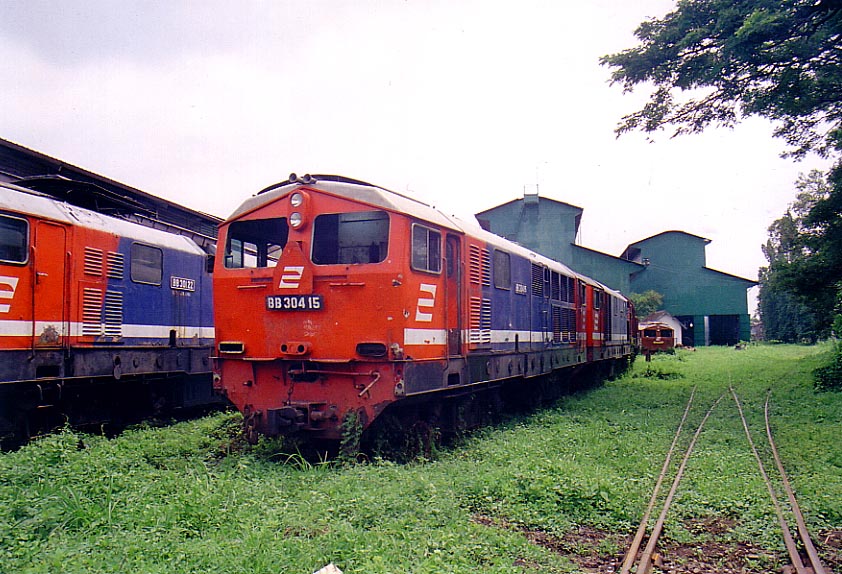 |
This BB304 is one of a few stored locomotives in Pengok. Note the workshop building in the background, which can be identified by its army green colour. |
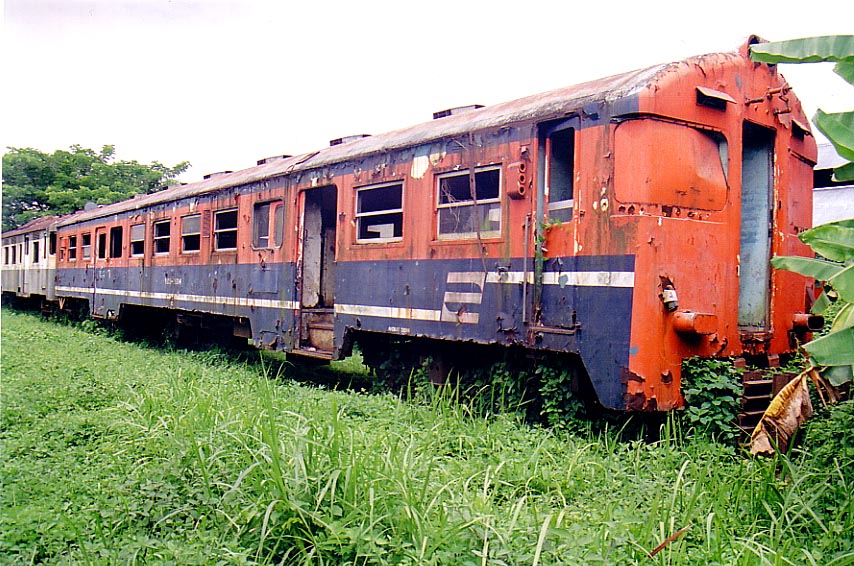 |
This is the remain of the Shinko-engined diesel railcar, which is still in its original condition. First introduced in 1976, the railcars used to have an unique transmission system, which is a combination of hydraulic and mechanic transmission. The hydraulic transmission was used during the start up and acceleration. When the train reached its top speed, the mechanical transmission was used instead. This unusual system proved unreliable, and the type was taken out of service in early 1980s, and stored. Later it was revived for loco hauled local trains. The cars were later modified by having its driving cab removed to give additional space for the passengers. |
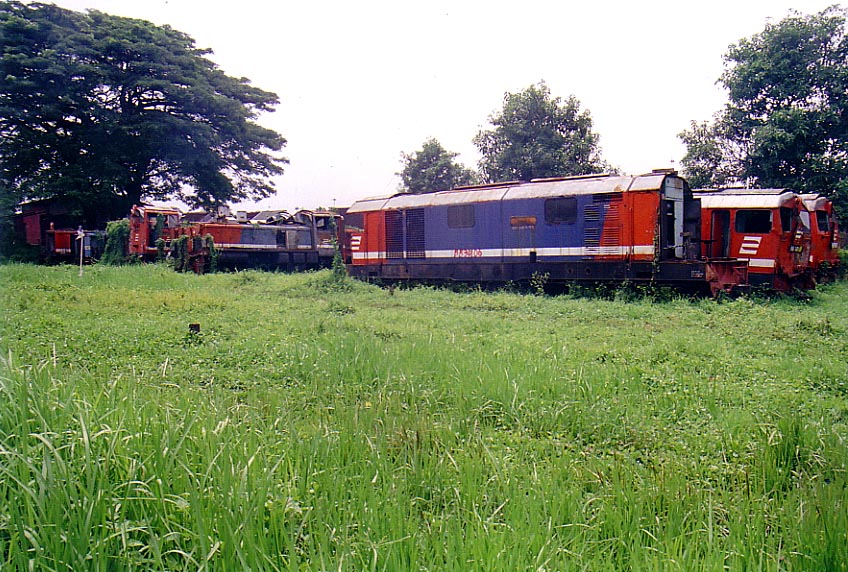 |
Not all of the stored locomotives in Pengok are destined for revival. Some had even had their wheels removed, like the locos in this picture. These hapless locos will be dissected pieces by pieces, where some of those components will be used as spare parts for another locos. |
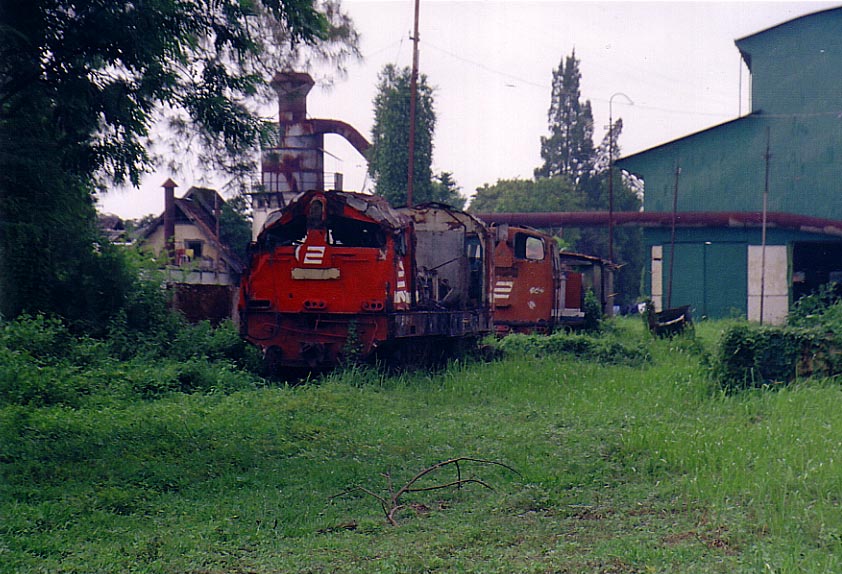 |
This sad-looking loco is the BB304 class leader: BB30401. Its engine compartement roof had gone, and one of its driving cab crushed (possibly as a result of derailment). When it was first introduced in 1976, this loco was the most powerful locomotive in Indonesia. It briefly held the title until it was superseded by CC201 a year later. Since then the loco had been used for different types of duties, and it was also involved in several accidents, before being sidelined by a heavy crash a few years ago. |
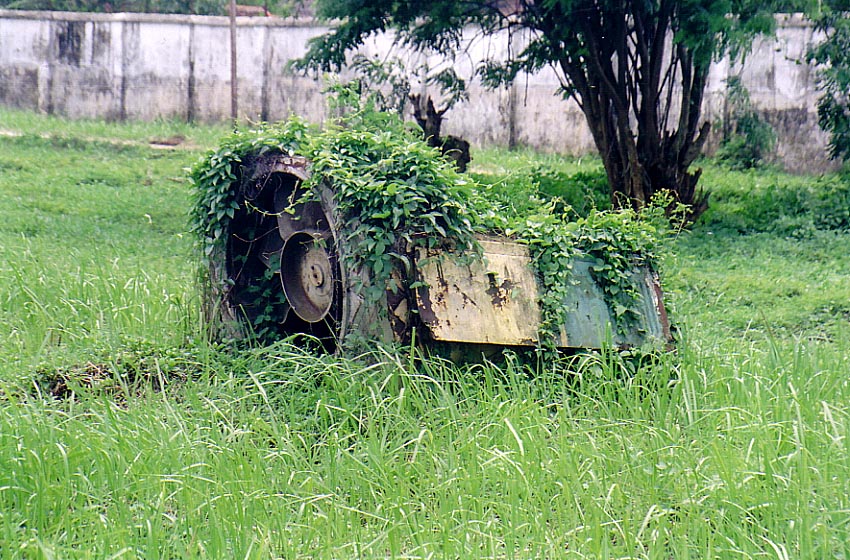 |
This mangled radiator is perhaps the most sinister 'exhibit' in the workshop. It used to be a radiator block of one of the locomotives which was involved in a tragic head-on collision in Bintaro, a suburb in the Southwest of Jakarta, in 1987. The accident is still remain as the worst-ever train accident in Indonesia. When one of the ill-fated loco was scrapped in Pengok, the scrapmen decided to leave this radiator on the spot, feared that it may cary bad luck, or there might be some body parts still remained in it. |
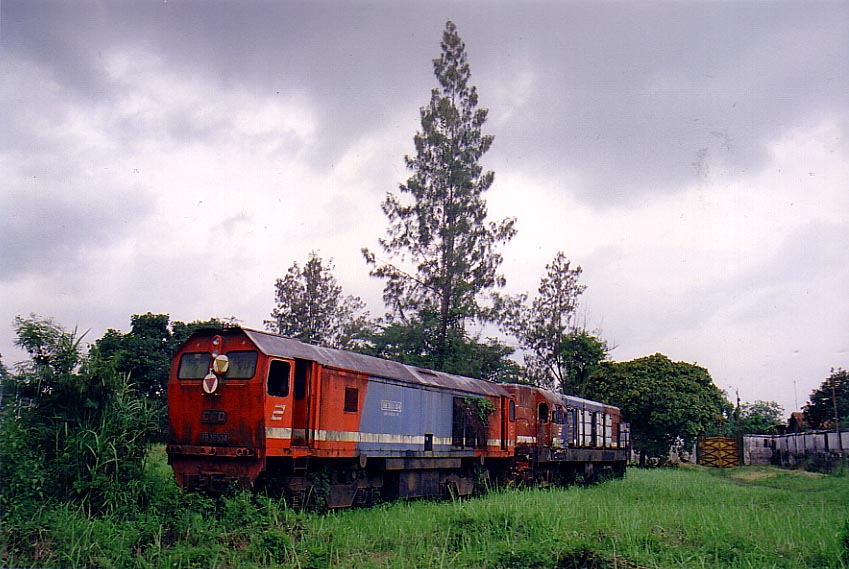 |
The dusk had already dawned for these locomotives, and it's seemed that there are no chance that we could see these BB305 (CFD) and BB200 locomotives running again. But let's hope that they would be preserved in a museum (which is rumoured to be built in the workshop area), so the younger generation could see the memories of the Indonesian railway's glorious past. |
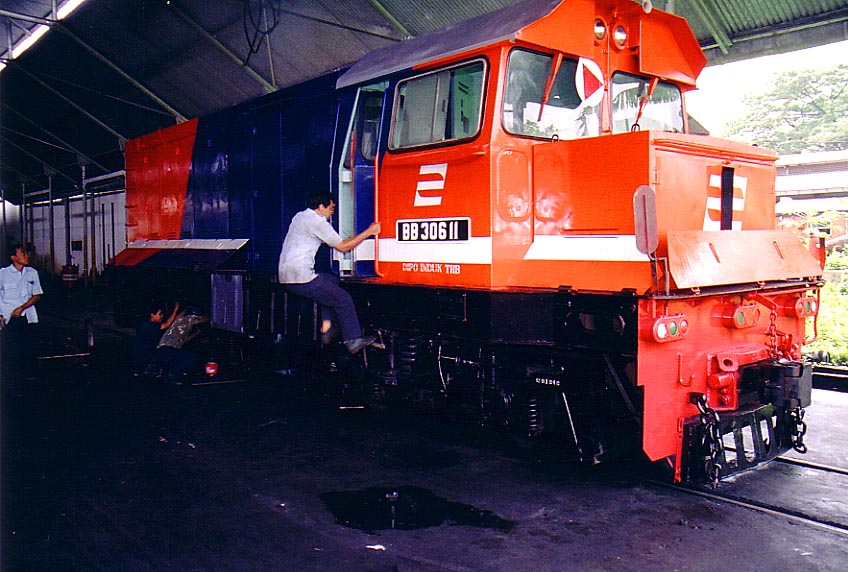 |
This BB30611 is one of a few locomotives which was lucky enough to be taken out from the storage and returned back to operational condition. It is seen being checked before it made a journey to its home base at Tanah Abang, Jakarta. |
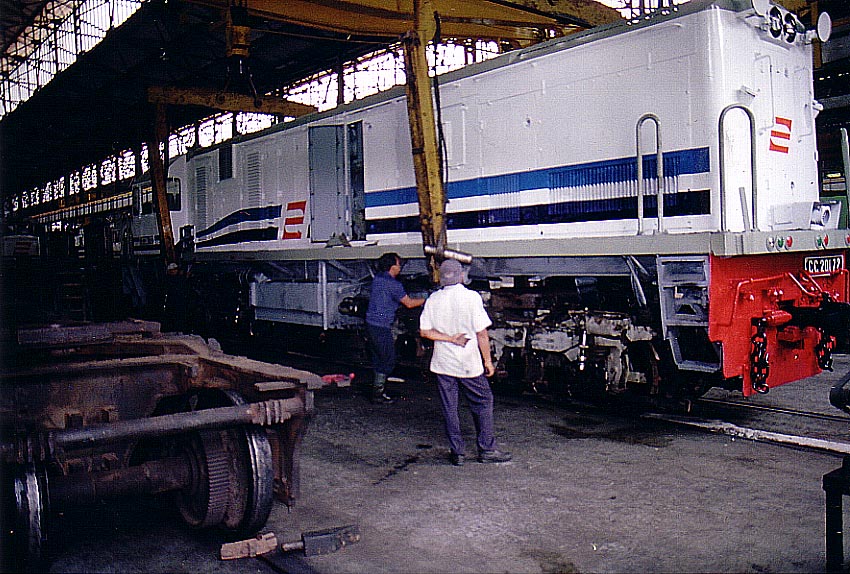 |
CC20172 is seen being lowered to its bogies in Pengok Workshop, Yogyakarta. The loco have just being overhauled, and it has been converted from general purpose locomotive into an express locomotive. It was previously painted in red. Note the former CC200 bogie on left. |
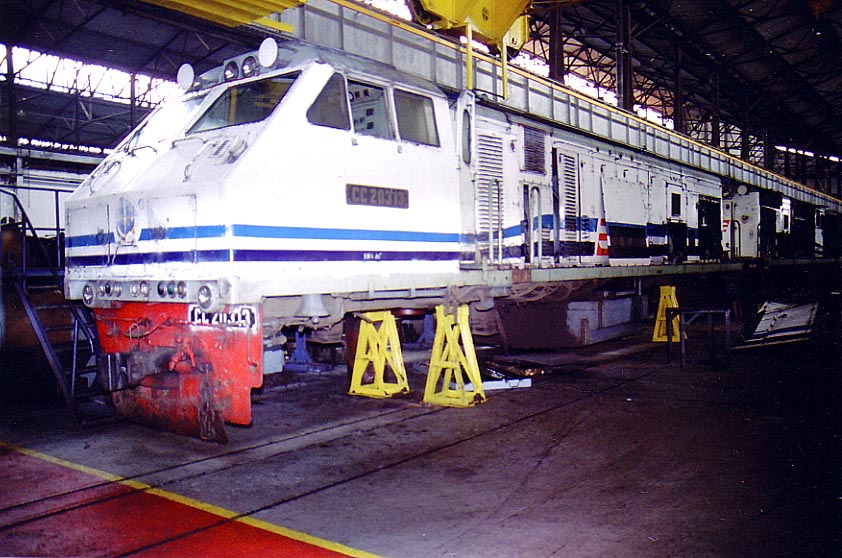 |
CC20313 is rested on stands while it undertake a major overhaul. Pengok Workshop is one of a few workshops in Indonesia which is equipped by cranes which strong enough to carry locomotive body. Note the dual gauge line underneath it. |
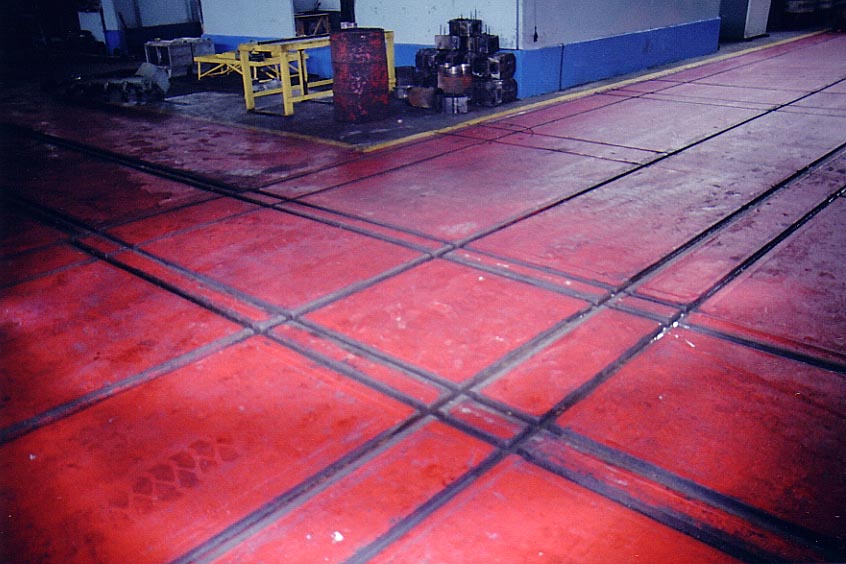 |
This is the remains of the dual gauge railway lines inside the workshop. As mentioned above, it was originally used to serve the standard gauge locomotive. And fortunately, those standard gauge lines inside the workshop still survived even until today. |